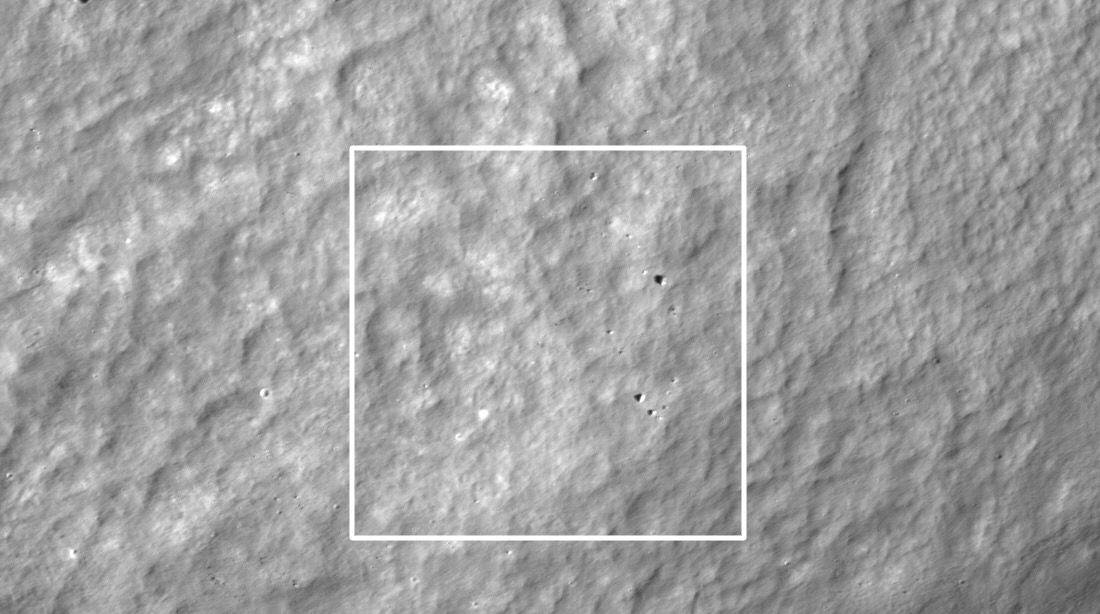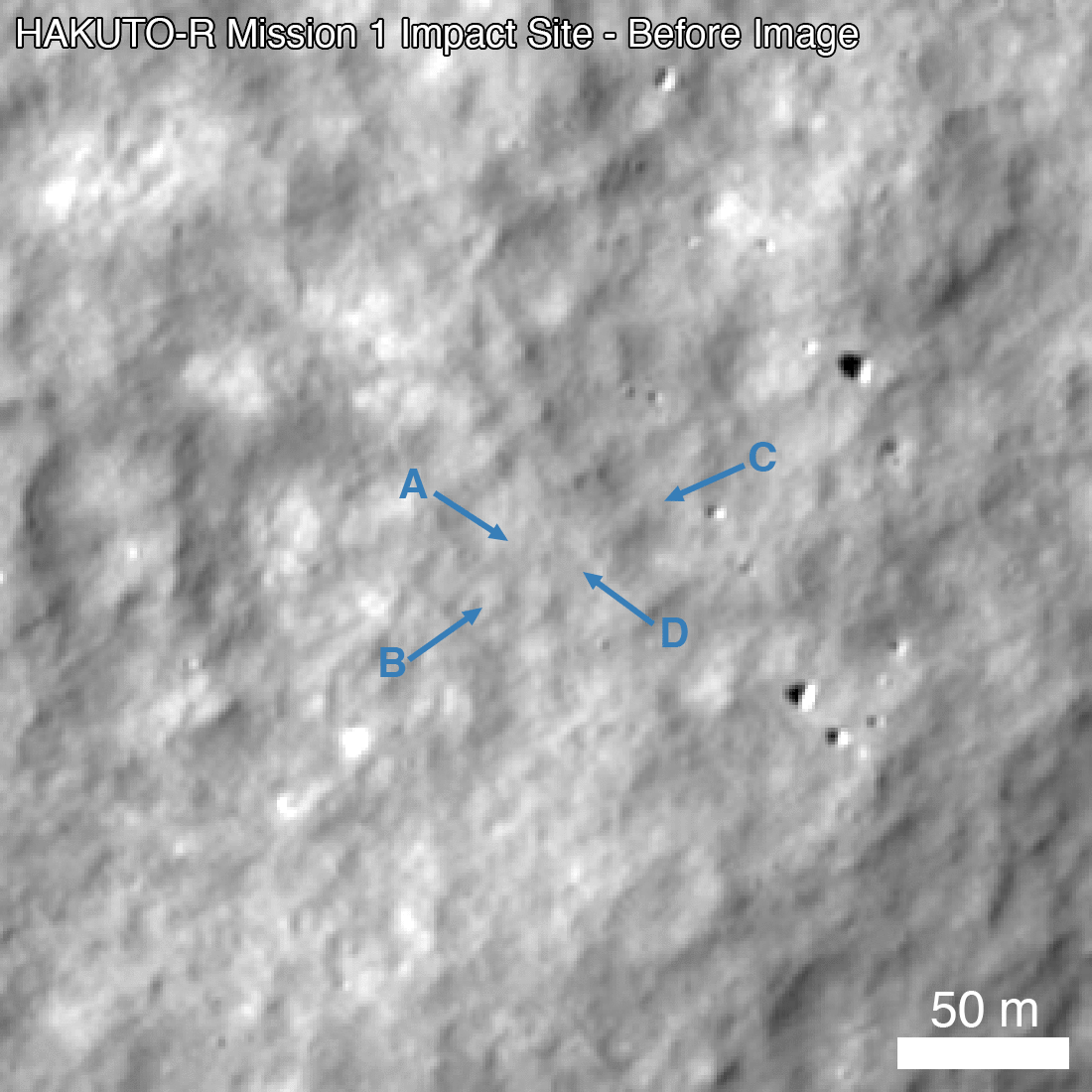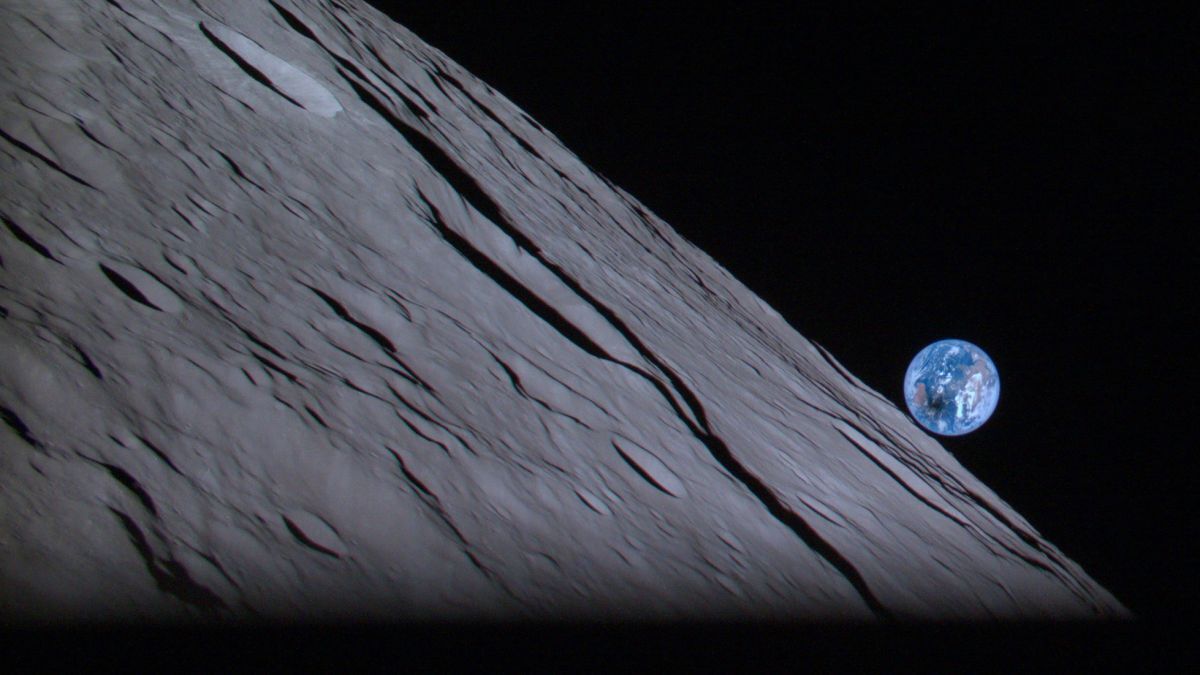25.05.2023
Images from the Lunar Reconnaissance Orbiter appear to show separate chunks of debris.

The Hakuto-R private Japanese moon lander’s impact site, as seen by NASA's Lunar Reconnaissance Orbiter on April 26, 2023, the day after the attempted touchdown. (Image credit: NASA/GSFC/Arizona State University)
A NASA lunar orbiter has spotted the final resting place of a private Japanese moon lander that failed in its touchdown attempt last month.
The Hakuto-R lander, also carrying a small rover for the United Arab Emirates, made its landing attempt on April 25, aiming to set down in Atlas Crater. However, communications with the lander were lost moments before the expected landing. The ispace team behind the lander later confirmed that the lander did not safely touch down on the surface.
Now the site of the apparent crash has been discovered in images taken by the Lunar Reconnaissance Orbiter (LRO).

Before and after comparison of the impact site of the private Japanese Hakuto-R moon lander, which attempted to touch down on April 25, 2023. Arrow A points to a prominent surface change with higher reflectance in the upper left and lower reflectance in the lower right (opposite of nearby surface rocks along the right side of the frame). Arrows B-D point to other changes around the impact site. (Image credit: NASA/GSFC/Arizona State University)
On April 26, LRO acquired 10 images around the landing site with its Narrow Angle Cameras (NACs), and the Lunar Reconnaissance Orbiter Camera (LROC) science team set about searching for the lost lander.
Images published by the LROC team on Tuesday (May 23) show at least four prominent pieces of debris and several small changes on the lunar surface at 47.581 degrees north latitude and 44.094 degrees east longitude, according to a team statement.
"The central feature in the image above shows several bright pixels in the upper left and several dark pixels in the lower right. This is the opposite of nearby boulders, suggesting this could be a small crater or different parts of the lander body," the statement reads.
"This site will be analyzed more over the coming months as LROC has the opportunity to reimage the site under various lighting and viewing geometries."

Lunar Earthrise is captured by the ispace Hakuto-R mission during the solar eclipse of April 20. (Image credit: ispace)
LRO has also imaged the sites of earlier failed landing attempts, including the 2019 try by the Israeli Beresheet spacecraft.
If successful, Tokyo-based company ispace's Hakuto-R would have become the first private spacecraft, and the first Japanese-built vehicle, to land softly on the moon.
Despite the failure, ispace is already working to get back to the moon and stick the landing. The company is working on its second and third moon missions, targeting launches in 2024 and 2025, respectively.
Quelle: SC
